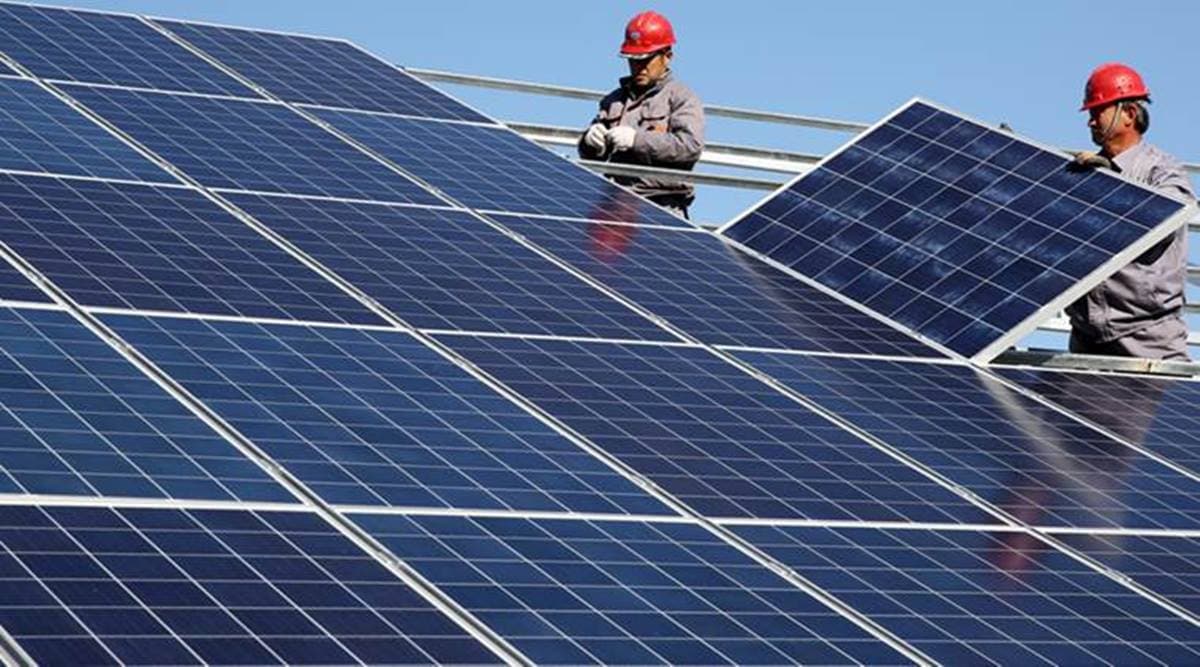
[ad_1]
 This surge in interest in the domestic manufacture of solar equipment coincides with measures initiated by the government to slap additional duties on imports across sectors, including solar power.
This surge in interest in the domestic manufacture of solar equipment coincides with measures initiated by the government to slap additional duties on imports across sectors, including solar power.
In an indication that the Centre’s ‘Atmanirbhar Bharat’ push could be yielding early results in the solar energy space, the Renewable Energy Ministry has received proposals from a range of players for over 10GW (giga watts) of fresh solar equipment manufacturing.
The proposals over the last couple of months to domestically manufacture solar equipment in India include those from the US-based First Solar, Gurgaon-based Renew Power, Kolkata-based Vikram Solar and the Delhi-headquartered Waaree Energies.
This surge in interest in the domestic manufacture of solar equipment coincides with measures initiated by the government to slap additional duties on imports across sectors, including solar power.
Explained | How does the Rewa Solar Power Plant match up to similar plants in India and abroad?
Power and Renewable Energy Minister R K Singh told The Indian Express that the government’s move to shift from the use of short-term ‘safeguard duties’ to protect domestic manufacturers to the imposition of customs duties has induced the industry to “make long-term commitments in terms of investments”.
While the government is yet to officially implement the proposed basic customs duty of around 20-25 per cent on solar equipment, the minister said a 5 per cent interest subvention scheme for the domestic manufacturing of ingots, wafer and cells “has gone to the Ministry of Finance”. He said the duty changes will be “WTO compliant”.
EXPLAINED
Boost for home industry
Singh added that a proposal to designate manufacturing zones for solar manufacturing was also being considered.
While there’s been considerable progress in solar capacity addition since 2014, with India progressively emerging as the world’s third largest solar market, the country’s domestic solar equipment manufacturing industry has largely failed to capitalise on the opportunity. Despite a 20GW demand for solar cell manufacturing, India’s current average annual capacity is only around 3GW, with nearly 80 per cent of the inputs and components imported from China.
So far, India has implemented only safeguard duties on import of solar equipment from China and Malaysia, which have been extended until July 2021 at a rate of around 15 per cent. “We have always felt that a safeguard duty is of limited duration and will therefore not induce people to make long-term commitments in terms of investments and, therefore, there should be basic customs duties,” said Singh. “As soon as that sense went out — that what the Ministry of Power has been saying has been accepted by the government — people started setting up manufacturing facilities here,” he said.
Among the new proposals, Vikram Solar is planning to set up a 3GW facility in Tamil Nadu over the next four years to manufacture solar wafers, cells, and modules. ReNew Power had also announced plans to set up a 2GW manufacturing facility for cells and modules, with the location yet to be finalised. Waaree Energies is expected to set up a 3GW facility, said Singh.
American solar panel maker First Solar — a major global provider of PV solar systems that has supplied solar panels worth over 20GW globally — has also applied to the ministry for a capacity of around 2.4GW, he said, adding that besides these names, there are other proposals of around 3-4 GW capacity.
The new proposals are in addition to the capacity to be set up by Adani Green Energy and Azure Power through their manufacturing-linked agreements with the state-owned Solar Energy Corporation of India.
There are about 16 solar cell manufacturers in India, according to Mercom India Research, of which only half have a manufacturing capacity of 100 MW or higher.
Despite initiatives over the last two years to incentivise domestic production – the safeguard duty, domestic content requirement policy and an approved list of models and manufacturers — the expected scale-up did not materialise until now.
A key reason is that solar cell manufacturing is a complicated process that is technology and capital intensive. Another reason is that solar cell technology sees upgrades every 8-10 months.
Globally, solar wafer and ingot manufacturing is dominated by China, whose companies dominate the Indian solar components market too with their competitive pricing.
China was the top exporter of solar cells and modules to India in FY’20, accounting for around 78 per cent of total imports ($1.68billion) of the product into the country.
📣 The Indian Express is now on Telegram. Click here to join our channel (@indianexpress) and stay updated with the latest headlines
For all the latest India News, download Indian Express App.
[ad_2]
Source link